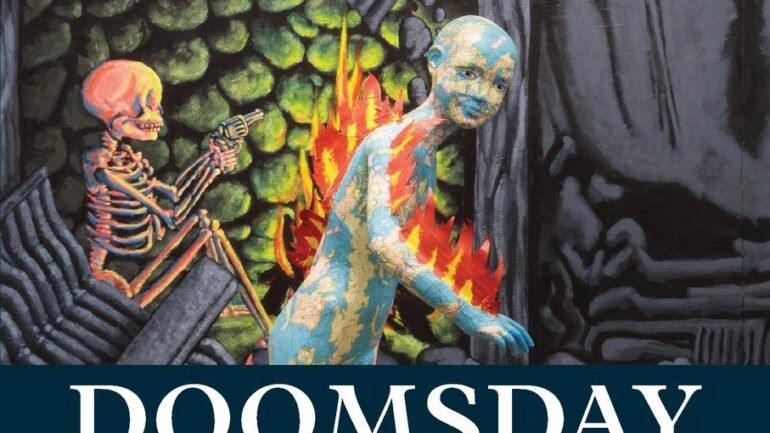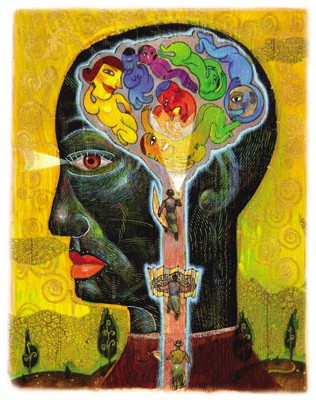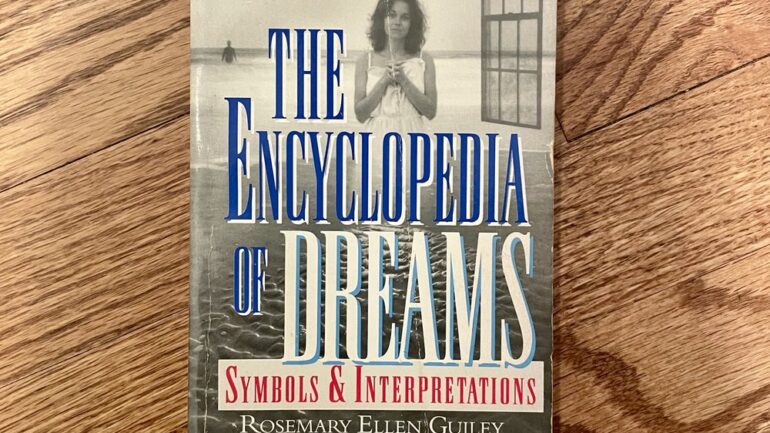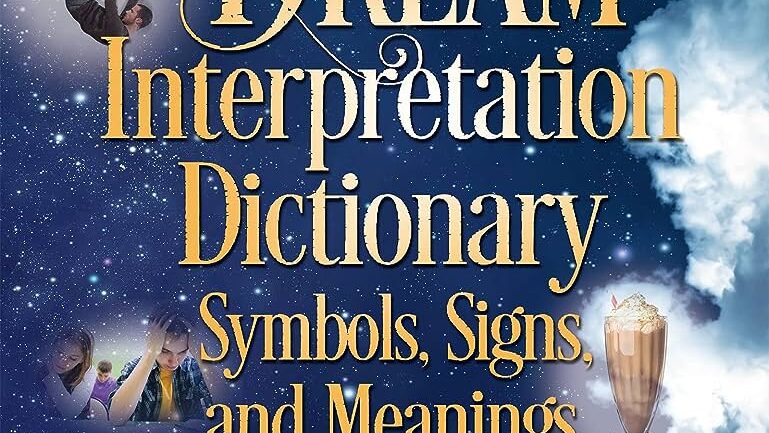Apocalyptic dreams, those vivid visions of chaos and destruction, have captivated the human imagination across cultures and generations. These dreams, despite their unsettling nature, offer a unique glimpse into the shared experiences of humanity. This article delves into the intriguing connection between apocalyptic dreams and the collective unconscious, shedding light on the psychological and cultural threads that bind us together.
Understanding Apocalyptic Dreams: A Multifaceted Phenomenon
Apocalyptic dreams, often characterized by themes of devastation, survival, and rebirth, have been a recurrent phenomenon in human history. These dreams hold a mirror to our collective anxieties and hopes, offering a fascinating window into the human psyche. From ancient mythologies to modern fiction, apocalyptic dreams have left their mark on our cultural narrative, inspiring awe and introspection alike.
Historically, cultures around the world have woven apocalyptic dreams into their belief systems and stories. Floods, fires, and celestial events often take center stage in these dreams, serving as metaphors for transformation and renewal. It’s remarkable how these recurring themes resonate across cultures, pointing to a shared understanding of the profound cycles of destruction and rebirth that shape our world.
Unveiling the Collective Unconscious: Bridges Between Minds
The concept of the collective unconscious, as proposed by Carl Jung, suggests that beneath our individual consciousness lies a reservoir of shared archetypes and symbols. These universal patterns emerge in our dreams, myths, and fantasies, reflecting the fundamental aspects of the human experience. Apocalyptic dreams, with their recurring imagery, provide a unique glimpse into this collective realm, revealing the interconnectedness of our minds.
“The collective unconscious is common to all,” Jung noted. This shared psychic inheritance shapes our perceptions, influencing how we interpret and experience the world around us. Apocalyptic dreams tap into this reservoir, drawing from a common wellspring of archetypal imagery that transcends time and cultural boundaries. These dreams bind us together, offering a deeper understanding of our shared humanity.
Cultural and Symbolic Resonances in Apocalyptic Dreams
Apocalyptic dreams, despite their cultural diversity, often contain strikingly similar symbols and motifs. The flood that washes away the old, the fire that engulfs and purifies—these archetypal images find their way into the dreams of individuals from different corners of the world. It’s as if these symbols speak a universal language that transcends language and culture.
Throughout history, apocalyptic dreams have played a pivotal role in shaping cultural narratives. The story of Noah’s Ark, for instance, exists not only in Judeo-Christian tradition but also in the Epic of Gilgamesh from Mesopotamia. This resonance points to a shared human experience that crosses cultural boundaries, affirming the power of these dreams to bridge gaps and connect us through our collective imagination.
Neuroscience and Apocalyptic Visions: Probing the Dreaming Mind
The scientific exploration of dreaming has uncovered intriguing insights into the phenomenon of apocalyptic dreams. During the REM sleep phase, the brain becomes a theater of vivid imagery and experiences. It’s within this realm that our apocalyptic visions unfold, triggered by a complex interplay of neural activity and emotional processing.
Research indicates that apocalyptic dreams might stem from a combination of personal experiences, societal influences, and innate psychological mechanisms. These dreams serve as a psychological outlet, allowing us to confront our fears and anxieties within the realm of the subconscious. The collective nature of these dreams, however, remains a captivating mystery—one that offers a unique lens through which we can explore the interconnected nature of human cognition.
The Social and Emotional Impact of Shared Dreams
Shared dreaming experiences hold the potential to foster a sense of profound connection among individuals. When two or more people recount similar apocalyptic dreams, they discover a shared thread that transcends their individual lives. This shared experience creates a bond that bridges geographical, cultural, and temporal gaps, affirming the fundamental interconnectedness of human experiences.
The emotional aftermath of apocalyptic dreams is equally compelling. While these dreams can trigger fear and unease, they also offer a platform for introspection and personal growth. As we navigate the landscapes of our subconscious minds, these dreams encourage us to confront our deepest fears and anxieties, often leading to a renewed perspective on life and its inherent uncertainties.
Apocalyptic Dreams in Modern Media and Culture
Apocalyptic themes have found a prominent place in modern media and popular culture. From dystopian novels to blockbuster movies and gripping TV shows, these narratives resonate with audiences worldwide. The widespread fascination with these stories underscores our enduring fascination with apocalyptic imagery and the collective unconscious.
These modern interpretations often draw from the rich well of archetypal symbols found in apocalyptic dreams. The end of the world, often depicted as a cataclysmic event, becomes a canvas upon which artists and creators explore themes of human resilience, the fragility of civilization, and the potential for rebirth. Through these cultural expressions, the ancient threads of apocalyptic dreams continue to weave their way into our contemporary lives.
Interpreting Apocalyptic Dreams: Personal, Cultural, and Psychological Meanings
Interpreting apocalyptic dreams is a multifaceted endeavor. Individuals may perceive these dreams as literal premonitions of future events or symbolic reflections of their inner turmoil. Cultural backgrounds also play a significant role in shaping dream interpretation—what may be interpreted as a harbinger of doom in one culture might symbolize transformation and new beginnings in another.
Psychotherapists often explore the meaning of these dreams with their patients, uncovering hidden fears and desires lurking beneath the surface. The process of analyzing apocalyptic dreams can provide valuable insights into an individual’s psyche, offering a path towards greater self-awareness and personal growth. The shared nature of these dreams also enables therapists to facilitate group discussions that tap into the collective unconscious, fostering a sense of unity among participants.
The Evolution of Apocalyptic Dreams: From Ancient Visions to Future Insights
The evolution of apocalyptic dreams reflects the evolution of human consciousness. Throughout history, these dreams have taken on different shades of meaning, shaped by the prevailing cultural and societal contexts. From ancient prophecies to contemporary dystopian narratives, the underlying themes of destruction and rebirth persist, speaking to our enduring fascination with the cycle of change.
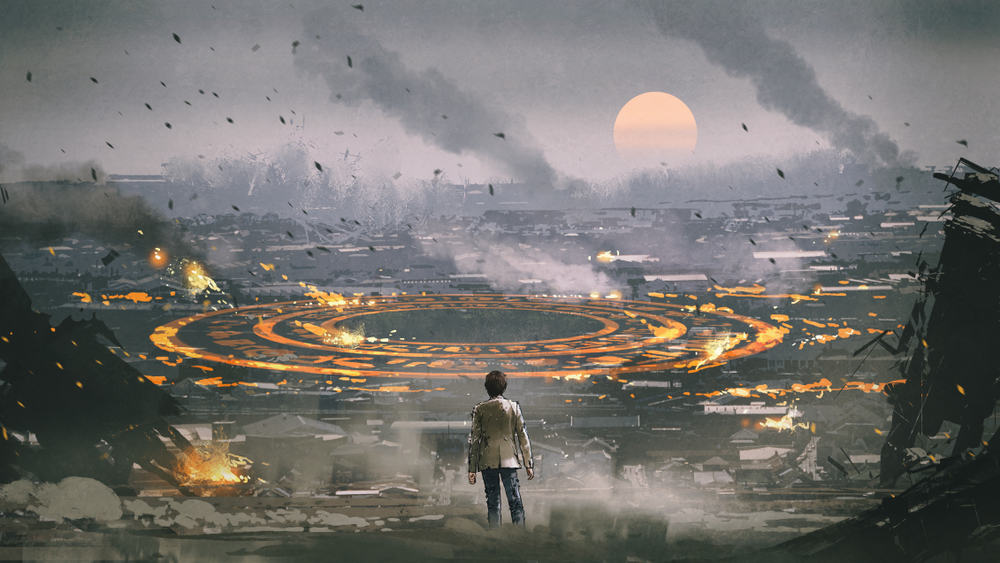
As technology continues to advance and society undergoes transformation, it’s likely that apocalyptic dreams will adapt and evolve. Future generations may dream of scenarios shaped by emerging technologies, reflecting our ever-evolving relationship with the world around us. Yet, beneath these shifting exteriors, the core archetypal symbols remain, reminding us of the timeless connection between apocalyptic dreams and the collective unconscious.
Conclusion
Apocalyptic dreams are more than mere nighttime fantasies; they are threads that weave a tapestry of shared experiences, connecting us through the labyrinth of the human mind. The collective unconscious, a reservoir of archetypal symbols and universal narratives, finds its expression in these dreams, reminding us of our shared humanity. As we navigate the landscapes of our dreams and the stories they tell, we read here uncover the timeless truth that, despite our diverse backgrounds and individual lives, we are all connected by the threads of apocalyptic dreams.

Welcome to my website! My name is Patrick Petherick, and I am a professional Emotional Dream Coach. I am passionate about helping individuals understand the profound symbolism and meaning behind their dreams, and guiding them towards emotional healing and personal growth. Check it

